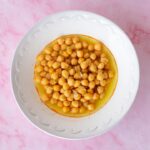You may be addicted to sugar—but here’s the thing…it might not be your fault. Because as much we can try to eat organic and whole foods, sometimes additives like sugar are snuck into seemingly healthy items.
“To improve the way things taste, the food industry often adds additives that can become sugars,” says Mexico City-based nutritionist Mariana Pérez Trejo Soltwedel. She explains that these sugars are hidden under different names in processed products, making it much more difficult for us to realize the true amount of sugar we are consuming every day. An excess of sugar could cause a host of illnesses: acne, headaches, excessive cravings, chronic fatigue, mood swings, premature aging, and inflammation. If any of this sounds (and feels) familiar, perhaps it’s time to look in the pantry for the sneaky sugar culprits.
First thing first: You should assess all of the processed foods sitting in your pantry. Read the labels of products like meal bars, bread, beer, cereals, cookies, granola, and canned sauces—sugar is a master of deception and hides under many identities such as sucrose, high fructose corn syrup, lactose, coconut sugar, maltose, invert sugar, fructose, maple syrup, molasses, evaporated cane juice, rice syrup, honey, or agave honey. These are all different names for the same thing… sugar.
Secondly, remember—just because something is labeled or branded “healthy,” doesn’t mean it is so. If you’re ever in doubt, Pérez recommends choosing foods that come directly from nature, fruits, proteins, whole grains, and legumes. She adds that dressings, juices, and sauces should be homemade in a perfect world, but that’s not always possible. Instead, this is where reading labels comes in handy again. “If you check the label of something and see that it has a long list of ingredients and hard-to-pronounce names, that likely means it is filled with preservatives, dyes, and sugar,” she says.
By following these two rules, you’re taking a step in the direction of making better choices—starting to break your relationship with sugar.
Read the full article here




